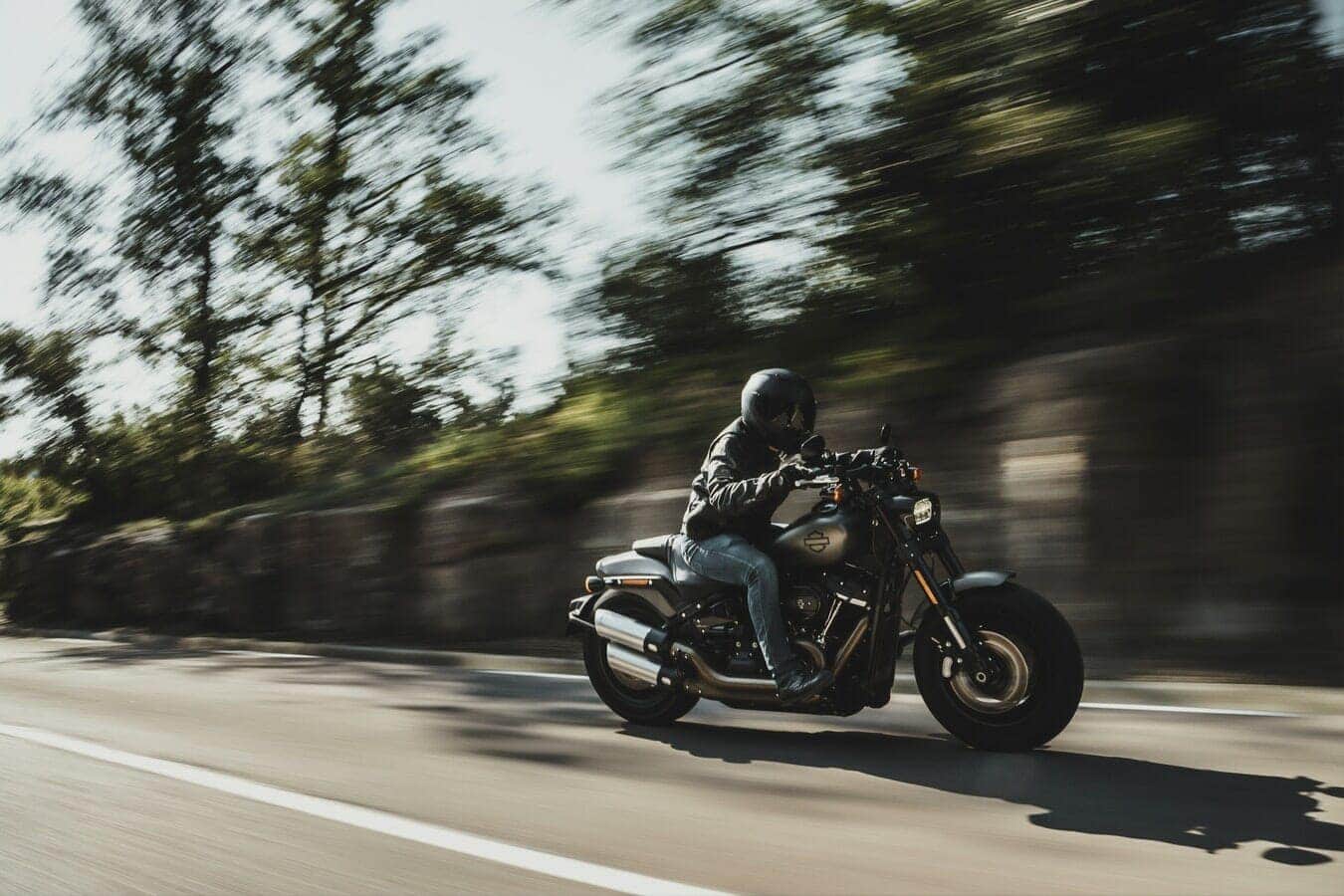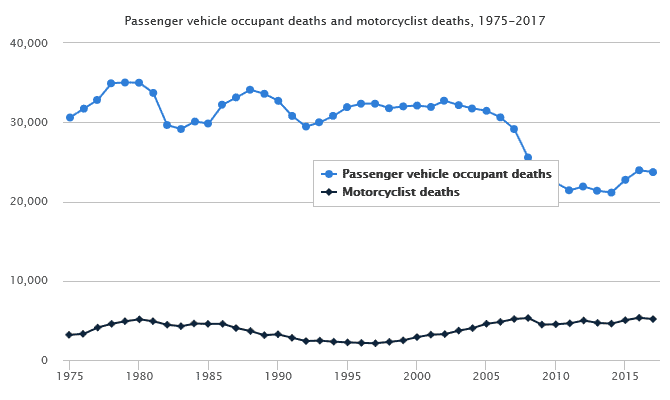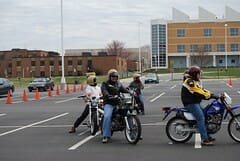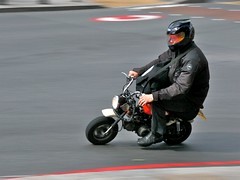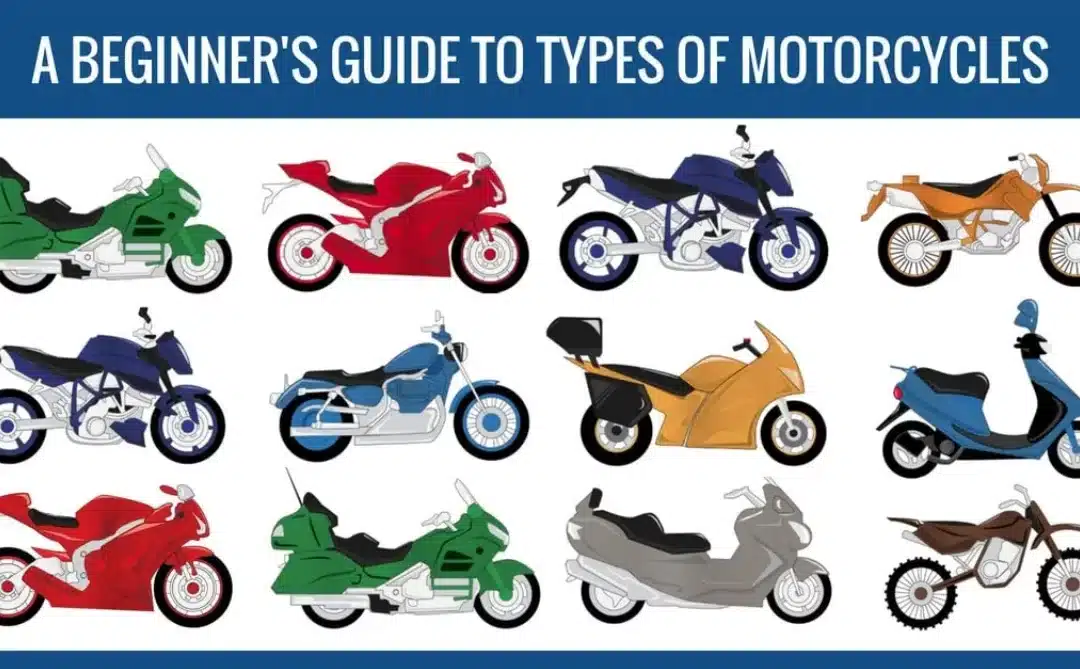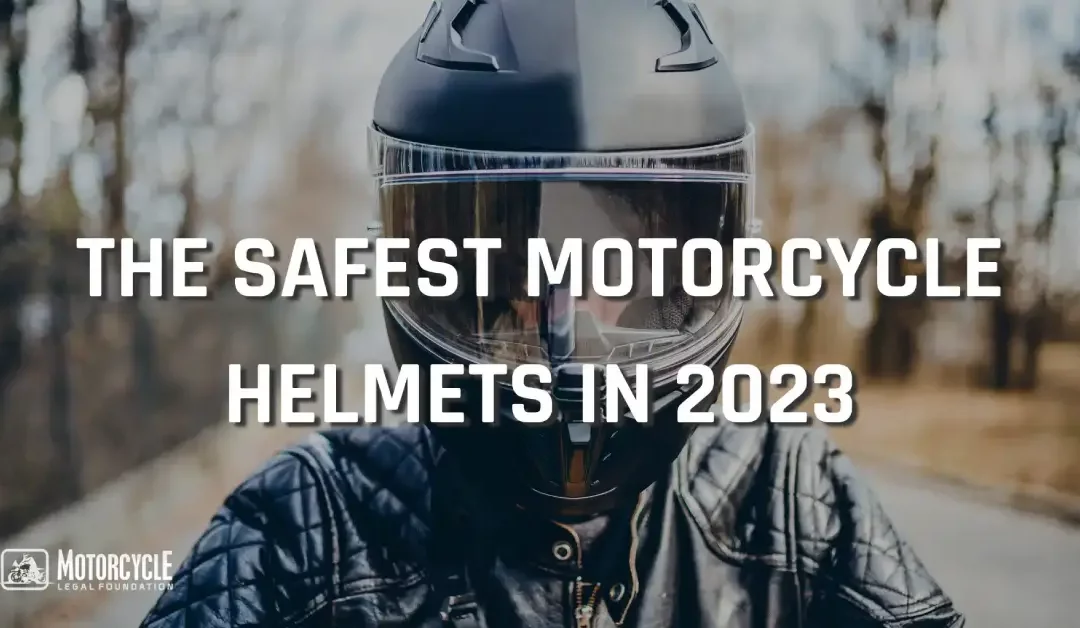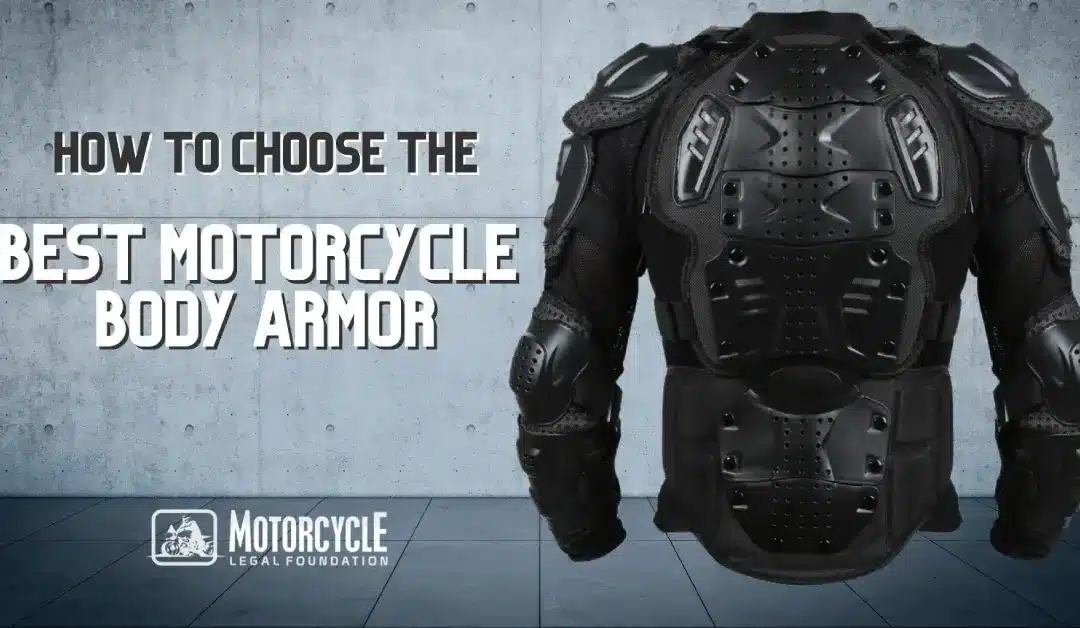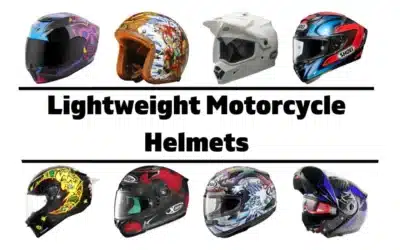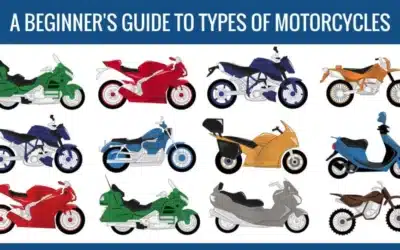The Dangers of Motorcycle Riding
How Can You Mitigate the Risks?
Quick Tips to Minimize the Dangers
Are Motorcycles More Dangerous Than Cars?
The big looming question that can always spark a debate is whether motorcycles are really that dangerous. Before going any further, what do you think? Statistics can tell a story, but the question is how will you react to the numbers? Getting informed on the potential dangers and statistics is a big step in understanding the whole picture, so we commend you for taking the time to learn about motorcycling whether you take the step into a motorcycling career or not.
The National Highway Traffic Safety Administration (NHTSA) claims that motorcycle riders are 26 times more likely to die in a traffic collision and 5 times more likely to be injured than a passenger in an enclosed vehicle. If you look at the fatalities of passenger vehicle occupants against motorcycle riders, you can see motorcycle fatalities have slightly increased over the last 15 years while passenger vehicles have consistently decreased. Does that mean that motorcycles are dangerous because they haven’t become apparently safer in 15 years? No, not really. They are as dangerous, or as safe, as they have been in recent years. The answer may just be in the eye of the beholder, regardless of statistics.
The Dangers of Motorcycle Riding
There are a few categories that present dangers to two-wheeled transportation. These are the major ones to keep in mind when you throw a leg over your favorite motorcycle:
- Changing Weather – Not every day is going to be sunny, so riding in some kind of inclement weather may be a choice you have to make. Windy conditions, wet conditions, or even overly sunny days present a little bit of danger as weather patterns can change over the course of an hour or as you move into different locations on a ride. Sunny days can zap your energy and also drain the moisture from your body causing cramps in your muscles. Preparing for any and all weather conditions is a needed skill to keep you safe.

- Other Drivers – Weather patterns are somewhat predictable, and a simple smart phone can keep you up to date on what to expect over the course of a day. Other drivers that share the same stretch of road aren’t as predictable. By looking at the fatality chart above, you see that passenger vehicle occupant deaths had a clear decline in the last 15 years. Safety standards have continued to increase and safety features have been refined to offer more protection. The upward trend over the last four years of the chart have a large contribution from “distracted driving”. More things to play with in the car, using mobile devices while driving, etc. While that accounts for more passenger lives lost, it also potentially contributes to more motorcycle rider lives lost if they are involved in an accident with that vehicle. The best way to prevent that is ride prepared for anything, including distracted or impaired drivers.

- Riding Above Your Skill Level – As a new rider, every scenario is something new to experience. It’s all fresh and you haven’t gained the experience of navigating heavy traffic, highways and byways, and the freedom of the open road. As you ride more and more miles, you gain experience and confidence. The key is to stay within your skill level and not ride into situations that put you at risk. Stay out of large groups if you’re unfamiliar with group riding techniques. Stay off the highways if you’re uncomfortable with higher speeds that require lightning fast decisions. Ease into riding as best as possible to stay as safe as you can every ride.
- Road Conditions – Just as weather can change, the road conditions can also. Rain, snow, and ice can cause traction issues. Rain can cause mud to show up quickly. Urban areas may have more debris from heavy traffic, and heavy traffic can cause grooves in the road that affect your balance and ability to navigate. Learning to read the road changes, watching for debris, and navigating all of the present obstacles will be key skills to gain every time you ride.
How Can You Mitigate the Risks?

- Don’t ride impaired – Riding a motorcycle brings inherent risk with road conditions and weather changing, other motorists, and that’s with a clear head. Riding impaired by any definition adds to your risk. Impaired doesn’t just cover alcohol or illegal drugs. It includes prescription medications, over-the-counter medications, and now includes distracted driving. Trying to text and ride slows down your reaction time and being on a motorcycle at the time exponentially increases your risk of an accident, injury, or fatality.

- Don’t speed excessively – This seems like a pretty easy concept, but on a motorcycle it can be pretty easy to let the throttle get ahead of you in traffic or a clear open road ahead. Speed can be deceptive on a motorcycle, and excessive speed can become dangerous as you may limit your ability to swerve around debris or objects in your path. Flowing with traffic, even if at or above the speed limit, may have its place as it can keep you from being a rolling object clogging up the flow of traffic. That may put you in danger more than just riding in traffic. Keep up with other traffic, but don’t become the blur that no one sees until it’s too late.

- Maintenance – Keeping your motorcycle in top shape will prevent an accident, or just the hassle of being stranded on the side of the road waiting for a friend or tow truck. T-CLOCS is an acronym that outlines a basic maintenance ritual to check your motorcycle before you start your ride. Even if you have multiple stops in a day, a simple T-CLOCS check of your tires, controls, oil and fluids, chain, and suspension can keep you safe and trouble-free all day. In between your riding sessions you’ll want to conduct the maintenance suggested by the manufacturer of the motorcycle, and anything that need repair or replacement.

Quick Tips to Minimize the Danger
- ATGATT – Buy appropriate motorcycle gear, including a helmet, gloves, a jacket, pants, and over-the–ankle footwear.
- Never ride impaired or distracted.
- Invest in rider training whether you’re new to motorcycling or have a few years under your belt.
- Learn to read traffic patterns and the changes in weather, then know how to avoid the risks associated with each.
- Ride conservatively with traffic, and don’t ride above your skill level. If you’re uncomfortable in certain situations, forcing yourself to learn to ride through them puts you at risk. Find a safe area to ride and learn how to navigate those situations on a safe closed course.
- Choose a motorcycle perfect for your size, skill level, and the type of riding you plan to do
- Maintain your motorcycle, whether that is as a do-it-yourselfer or paying a certified technician to keep your ride in top shape.
- Learn the laws where you plan to ride. Is lane splitting acceptable, can I use a radar detector, and what motorcycle safety gear is required are just the tip of the iceberg. Know what is legal and not legal before you ride.
Are Motorcycles More Dangerous Than Cars?
Knowing the dangers of motorcycling, and ways to navigate the risks, brings you to the question of should you ride a motorcycle or just stick with an enclosed vehicle. This is going to be a personal choice, but both can offer advantages and disadvantages that you’ll have to consider:
Why You Should Ride a Motorcycle:
- Motorcycles cost less to own and operate than a car or truck in general. There will certainly be cases where an expensive motorcycle can overrule a cheap car, but generally the fuel efficiency of a motorcycle and low purchase cost make them an advantage.
- In urban areas, a motorcycle may be easier to navigate traffic with and far easier to find a parking spot. Some cities and businesses offer motorcycle specific parking near entry ways and entrances to entice riders to ride and park.
- Motorcycles have safety features that make them easy to ride safely, such as Anti-Lock Brakes (ABS). They also offer fuel-injection on most models that make them easy to start and will need very little maintenance to run smoothly for years at a time.
- The maintenance cost of a motorcycle is significantly less than a car or truck. An oil change may only cost $20-30 while a car or truck can cost upwards of $60 every few thousand miles. Tires can be three or four times the cost to replace, and you can skip the cost of wiper blades and smaller items that seem to wear out every year.
Why You May Want to Avoid a Motorcycle:
- Weather can play a big part in enjoying a motorcycle ride. Cars have heat, possibly air conditioning, and you can roll up the windows to avoid the wind gnarling your hair up around your neck. A motorcycle gives you the chance to feel the heat, the cold, all the wind and moisture, and some days that just isn’t fun.
- Cargo space is limited on a motorcycle compared to an enclosed vehicle with a hatch or truck area. You can get a good weekend trip packed in saddle and tank bags, but too much gear can also become a dangerous proposition. Your car or truck may allow you to pack for weeks at a time without a problem, and added danger of instability or too much added weight
- The lack of complete protection comparing a car to a motorcycle. Cars have crumple zones, seat belts, and airbags that designed to protect the occupants from injury and ejection. Unfortunately motorcycles don’t have seat belts, nor much of a crumple zone in comparison. Airbags within rider gear are still being developed for the riding public, but thankfully are showing significant protection when worn and utilized correctly. The technology is mostly used in high level motorsports currently, but it’s showing enough interest that it may trickle down to your local dealership as an added option in the near future.
After reading all the pros and cons, the dangers, and how to avoid them, have you changed your initial answer to the question, “Are Motorcycles Dangerous?” Statistics on motorcycle fatalities may sway your vote to yes. Losing lives in any regard can shine a negative light on any activity. Perhaps the better question or comparison would be to put motorcycling against other methods of travel to decide what is the most or least dangerous by percentage. People lose their lives on airplanes, yet we still fly. Cars and trucks are seen in accidents every day, and we still choose to own multiple cars and trucks. Are motorcycles really dangerous? Yes, they can be. It’s up to us to learn about the dangers, and then learn how to stay safe riding. Be safe out there!

